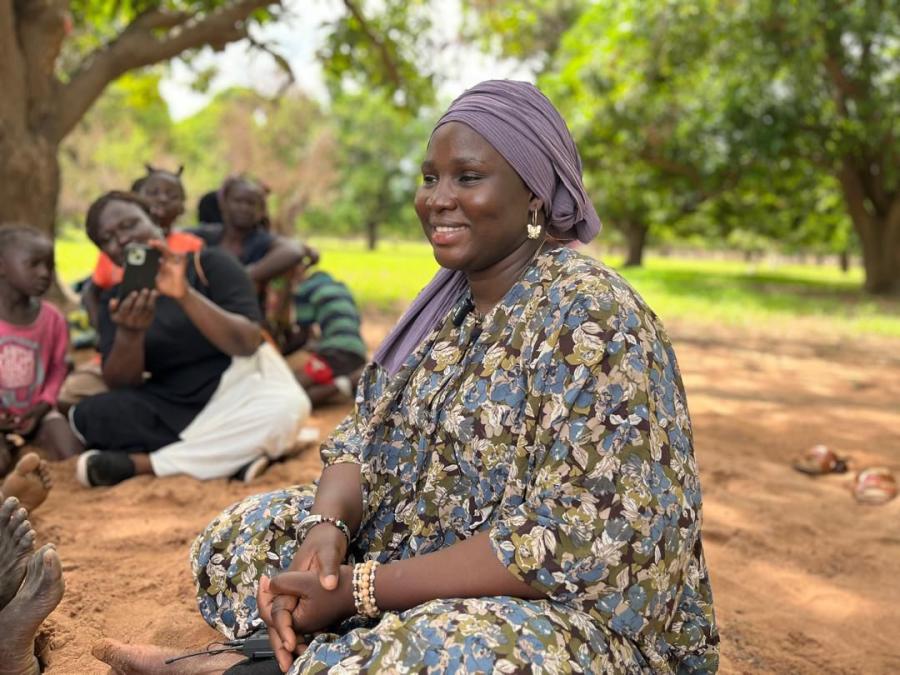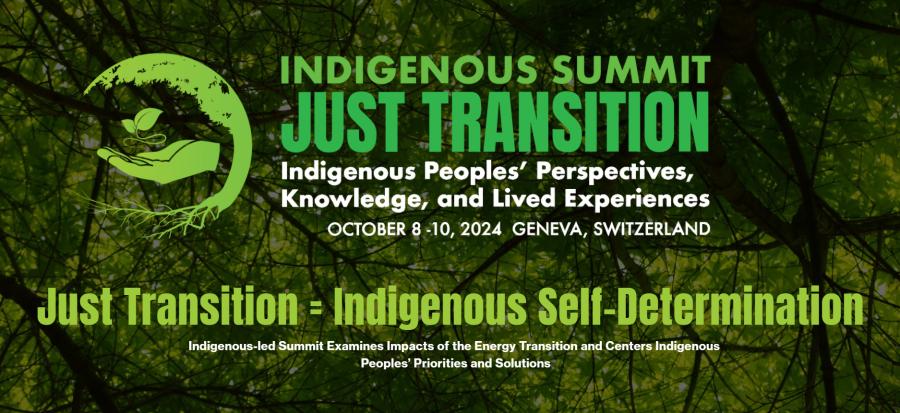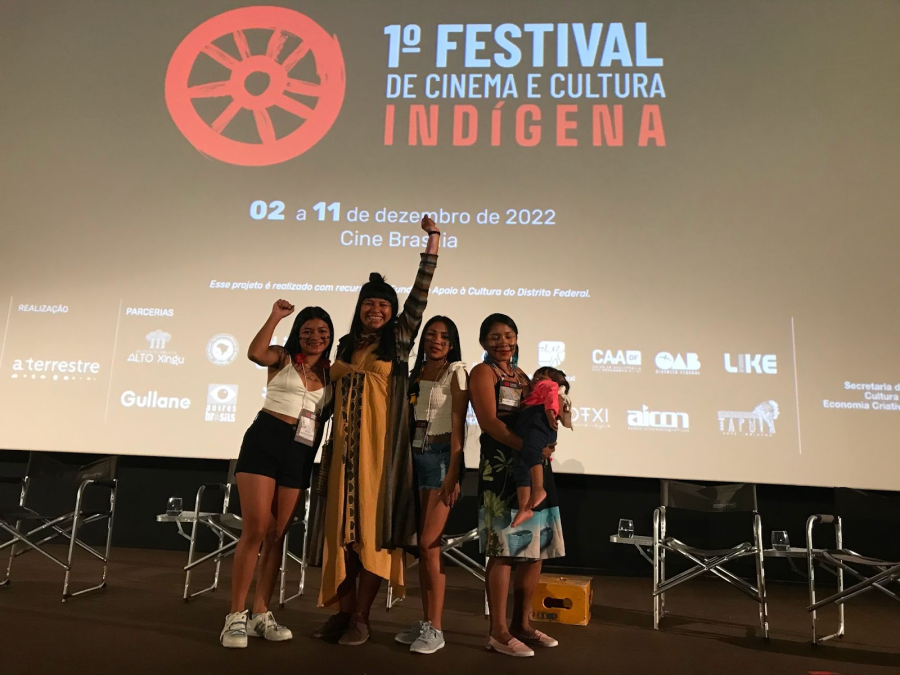Throughout the world, indigenous peoples have begun to form organizations and to establish links with other national and international organizations to assert their rights. Thousands of organizations representing single villages, regions or even indigenous peoples of the entire world are asserting the rights of indigenous peoples. They are focusing on such diverse issues as local cultural and land rights, subsistence rights, economic development priorities, bilingual education, mineral exploration, and political autonomy or even independence from central states.
The organizations are found in the Arctic, the Kalahari, the Amazon rainforest, the hills of Southeast Asia - virtually every area on the planet. They represent both peoples which have had little contact with outsiders as well as those that have interacted with other societies for generations. Membership in these newly formed bodies ranges from fewer than 100 to millions. Many of their struggles are at the heart of much of the turbulence, both internal and international, that is surfacing in the world today.
Their concern with significant issues at both state and international levels is shared by a number of potential allies. There are, of course, organizations such as Cultural Survival that work only on issues relating to indigenous peoples. Other groups that share the interests of indigenous peoples include organizations concerned with the environment, human rights, international law, refugees and development.
In addition, other groups want to collaborate with indigenous peoples to increase their own economic or political bargaining positions. Such groups include political parties, labor unions, churches and even governments. Such groups may threaten indigenous organizations by involving them in issues only marginally relevant to aboriginal peoples' concerns or by exploiting the legitimate concerns of indigenous peoples for ulterior purposes. These alliances can create powerful enemies for struggling, newly-founded organizations.
Many indigenous peoples, particularly those seeking political autonomy or independence, are frequently drawn into international conflicts to their own detriment. Recent examples of groups caught in larger power struggles are the Miskito Indians in Honduras who have received CIA funding to fight against the Sandinista government in Nicaragua; the Angolan and Namibian Bushmen in Namibia who are recruited by the South African army to fight against SWAPO (the Southwest African Peoples' Organization); and the Kurds whose aspirations for political autonomy are manipulated by both Iraq and Iran in their deadly stalemated war. Indigenous peoples hoping to acquire political autonomy through such alliances rarely, if ever, succeed, yet they resort to this course of action when all other negotiations fail.
This issue of Cultural Survival Quarterly focuses on the complicated issue of indigenous peoples' political organizations. The types of political strategies and alliances that are being adopted by these bodies vary tremendously throughout the world, but among them number both successes, to be emulated by fledgling organizations, and failing paths of action, to be heeded and avoided. Some of these choices may only be feasible under certain social, political or economic conditions. Other strategies or alliances are useful in the short term but later prove to be problematic. The implications of organizational strategies and alliances should be understood by all parties concerned - indigenous peoples, indigenists, environmentalists and human rights activists - so that the foreseeable problems can be avoided.
The Context of Indigenous Peoples' Organizations
While indigenous peoples have undoubtedly formed organizations for centuries, the number of organizations has increased dramatically during the last twenty years or so. There are many reasons for this. First, some groups have only recently been incorporated into larger political and economic systems. It is in this process of incorporation that such groups have understood the importance of maintaining their cultural identity. Governments often actively oppose such aspirations through the imposition of integrationist policies, "national" languages, religions and alien customs. Governments, both left and right, frequently undermine traditional values and the economic base necessary for survival of indigenous peoples through their attempts to individualize property or collectivize it at the state level.
As a result of the international debt crisis, many governments are much more interested in the resources they can extract from indigenous peoples than the services that they should provide. Ironically, it is in the absence of government provided services that a number of indigenous peoples throughout the world have begun to provide their own, more culturally appropriate services. These include such activities as creating and running their own schools, writing and publishing their own textbooks, establishing their own ecological reserves, and opening their own health care facilities.
Not all indigenous groups have been able to confront the overwhelming onslaught of government programs, corporate resource development or spontaneous colonization successfully. In the past 20 years, a number of groups have completely disappeared. Others have become disoriented and are in the process of being absorbed by expanding national societies. A few, however, have organized successfully and, in turn, begun to help others to do the same. In Latin America, for example, the Shuar of Ecuador have travelled to a number of countries to help other groups defend their land and cultures. Indigenous peoples' organizations as well as indigenist organizations are beginning to communicate more efficiently with wider audiences and to more convincingly document their individual claims to be pressed directly with governments or in international human rights fora.
Organizations of Indigenous Peoples
There is an astounding variety of indigenous peoples' organizations. In this issue of CSQ we have attempted to illustrate the diversity of the existing organizations. In general, organizations can be characterized by whether they represent one or a number of ethnic groups, by the focus of the organizations' activities, and by who controls the organizations. Richard Chase Smith's article on the indigenous peoples' organizations in the Andes provides an excellent framework for evaluating the types of organizations that exist throughout the world. His insights are equally germane to support indigenous peoples and groups that support them.
Many indigenous peoples' organizations are founded, first and foremost, to address specific social, cultural or economic issues at a local level. Once they succeed at this level, many focus more explicitly on land rights and political issues in a wider context. The declaration by the Nishnawbe-Aski reprinted in this CSQ states the reasons for the concerns of this Canadian group and their strategies for addressing them. CONFENAIE's statement also describes the gradual growth and maturation of the regional confederation of Indian groups in lowland Ecuador. Likewise, the statements from the World Council of Indigenous Peoples express the concerns of a number of indigenous peoples around the world.
Frechione's article on southern Venezuela not only describes the successful organization of the Yekuana Indians but also how both Protestant and Catholic missionaries promote the assimilation of indigenous groups in the area, confuse ethnic identity and encourage the abandonment of the traditional beliefs and lifestyles necessary for their survival.
Some groups are more successful than others at pressing their interests within the state. The Dene in Canada, as Michael Asch points out, are demanding political autonomy through the creation of a new province. The Dene are now considering how they would treat non-Dene within the Dene dominated, yet multiethnic new province.
In Brazil, Indians have only recently begun to organize at the regional and national levels. With the first ever Indian representative (Mario Juruna) in Brazil's Parliament, Indian issues are being raised more frequently than ever before. Unfortunately, Juruna's personal success and the unyielding ties of the Indian movement to the Catholic Church (CIMI) may limit the scope and activities of the country's Indian organizations.
When the more moderate elements within the organizations of indigenous peoples are recklessly ignored, more militant members are brought to the fore. As Kieffer points out for Moslems in the Philippines, and Macdonald demonstrates for the Miskito of Nicaragua, when legitimate demands for land rights and political autonomy are ignored many indigenous peoples take up arms to assert their claims.
Some groups have never accepted the Western treaties that have deprived them of their political autonomy. The Kurds have been fighting sporadically for 60 years to gain independence or at least autonomy from Turkey, Iraq, Iran and Syira. Michael Levy discusses the recent attempts of Kurds in Iraq to exploit that country's war with Iran to negotiate autonomy. Such a move would have serious implications for Kurds and governments alike throughout the Middle East.
Likewise, the Eritreans have been fighting their forced annexation by Ethiopia for more than twenty years. Like many other groups Eritreans depend on resettled Eritreans from around the world for financial and political support. Mary Dines' article discusses the problems for Eritreans in their long struggle for independence as well as the hardships they will face in setting up an independent Entreat
Finally, the Armenians, as exiles from their homeland, are insisting that the world recognize them as a people. The genocide of Armenians is an extreme example of policies used to resolve the problems central states perceive indigenous peoples pose. The piece in this issue, reprinted from a Zoryan Institute publication, discusses how the genocide of Armenians came about and what Armenians believe is their best course of action, as a people, at this time.
Indigenist Organizations
The international, non-governmental organizations that work with or on behalf of indigenous peoples also have varied goals and strategies for achieving them. Some indigenist organizations work solely in a lobbying capacity while others publish periodicals and reports; some fund projects directly with indigenous peoples while others will not fund projects at all; some undertake research while others encourage the indigenous groups to develop this capacity themselves; some groups focus on a specific group or geographical area while others focus on the entire world; some are staffed by anthropologists while others are not. Cultural Survival, for example, funds projects with indigenous peoples, conducts research on urgent and chronic issues, publishes for both a general audience and policy-makers, and uses professionals in identifying and analyzing issues. Whatever their mandate, however, or perhaps because of the number of varied ones, the staffs of such organizations have come to realize that it is to the advantage of indigenous peoples if indigenist groups coordinate their activities, reduce unnecessary duplication of efforts, eliminate territorial strategies and undertake joint activities when appropriate.
Three such organizations - the Anthropology Resource Center, the Anti-Slavery Society and the Minority Rights Group - are profiled in this issue. While there are more indigenist organizations and some needless duplication of efforts, it is probably a healthy fact-that so many different groups exist, each with its own area of expertise, its own area of influence, and its own network both of indigenous peoples and other interested individuals and organizations. The resources of these organizations are still miniscule when compared to those of the governments, corporations or multi-lateral development banks whose policies they are trying to influence. Indigenist groups, for example, have only recently begun to acquire the computers and information systems that have long been available to governments and corporations.
It is, in fact, a sad state of affairs that the largest organization in the world dedicated to working with indigenous peoples is the Summer Institute of Linguistics, a group dedicated to translating the Bible into all the world's languages and converting all the world's tribal peoples to Christianity. The SIL's budget is at least 10 times that of all the indigenist groups combined. Yet if its work is successful, the SIL will destroy indigenous peoples' beliefs and cultures, their best defense.
Information Gathering and Dissemination
One of the ways that the situation of indigenous peoples has become better known is through the dramatic increase in periodicals about their plight, which continually call their problems to attention. Recently, Cultural Survival decided to distribute the publications of a number of indigenist organizations in order to make distribution for all the groups more cost effective and simplify the ordering process. Although there is considerable overlap in subject matters as well as a noticeable absence of materials on some regions, a ripple effect of these publications has been to convince larger, more general periodicals to cover issues either directly or indirectly related to indigenous peoples. A glance at "...Briefly Quoted..." in this issue not only illustrates the increased coverage indigenous peoples are now receiving in the mainstream media, but also the involvement of indigenous peoples in global issues of major import.
A major problem for these publishers is a lack of contact with the thousands of tribal or ethnic groups in the midst of on-going struggles. The Indigenous Peoples Network has established a computer network to allow the information collected by like-minded indigenous and indigenist organizations to be centrally stored, updated and on call. The IPN has also put together a network of some 700 individuals or organizations who are willing to write a letter or send a telegram in response to urgent situations.
The IPN's approach will be as comprehensive as the cumulative knowledge of member organizations allows. This, unfortunately, will leave most tribal and ethnic groups in the world out of the network. There is a need for support organizations to travel more to contact groups and to set up conduits for information. In some cases, tribal groups, armed only with the knowledge of outside support, have been able to defend themselves against competing local interests. While the creation of such a network is slow and costly, Cultural Survival is attempting to find funds to allow us to make and maintain contact with groups with which we have not previously worked. Similar efforts are being undertaken by other indigenist organizations.
The U.N. Working Group on Indigenous Populations
A number of international fora now receive petitions and complaints from indigenous peoples. An extensive list of organizations, commissions and tribunals that receive such complaints, as well as instructions for preparing complaints, can be found in the Indian Law Resource Center's Indian Rights - Human Rights: Handbook for Indians on International Human Rights Complaint Procedures 1984 (available from Cultural Survival for $4.75 in either English or Spanish).
We have exerpted for this issue the section of the ILRC's book on the UN Working Group on Indigenous Populations. This relatively new forum is an important opening within the UN system for the discussion of all matter of issues relating to indigenous peoples. Richard Chase Smith describes the efforts of several Indian groups in the Andean region to represent themselves at the last meeting of the Working Group in July/August 1984. There are, however, groups from many areas of the world that have not been represented at such meetings. For example, not a single tribal group from Africa has ever attended the meeting of the UN Working Group on Indigenous Peoples. While the Working Group is still attempting to define its scope of interest, it is important that groups from Africa, South and Southeast Asia, the Soviet Union and the Middle East be at its meetings.
The focus of the Working Group to date has, as a result of the interests of those attending, focused to a large extent on the pressing problems of groups that are still considered to be colonized - Native Americans, Australian Aborigines, Tribal Filipinos. But other indigenous peoples within recently independent states are now facing serious racial discrimination, ethnocide and even genocide, as a result of internal colonialism; it would be a strategic error with grave implications to exclude from the outset the debate on the issues important to the indigenous peoples in Africa, Asia and the Middle East.
Coalitions Supporting Indigenous Peoples
A number of international organizations have assisted indigenous peoples in the past. International health organizations, professional associations, church groups, labor organizations and human rights groups have been involved in a number of campaigns undertaken jointly with indigenous peoples. It is perhaps the coalitions with environmentalists that have proven most effective. As James Clad's piece in this issue points out, this convergence of interest is not unanimous, however; there remains a number of areas of misconception and fundamental disagreement.
The environmental/indigenous people lobby nonetheless has united in a number of successful campaigns. Steve Schwartzman describes the recent efforts of environmentalists and indigenists to alter World Bank policies in Brazil. While these efforts hold promise, as Linda Greenbaum's piece demonstrates, the World Bank's approach in Brazil is still far from satisfactory.
Conclusion
Organizations of indigenous peoples have become a vibrant force in many areas of the world. These groups and their supporters are learning to manipulate alien economic, social and political systems and, as a result, are forcing states as well as individuals to accommodate the legitimate interests of diverse ethnic groups. As these organizations become more adroit international actors, they will not only force existing states to rethink their stances on social, economic and political autonomy, they will also offer important alternative views concerning how people can live more harmoniously with each other and the resources of the planet.
Article copyright Cultural Survival, Inc.



